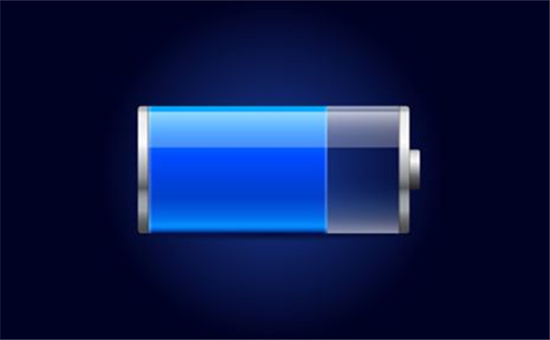-
How often do you check your battery state?
-
Does every battery need maintenance?
-
How do you care for different battery types?
Batteries Checking, Need And Battery Types
Sep 27, 2020 Pageview:1005
How often do you check your battery state?
There are a ton of things that can make your battery come up short, and a significant number of them are slow and barely noticeable. In this way, you have to check your battery consistently.
Most makers suggest that you get your battery tried at any rate two times every year. In zones with cold winters, you should test your vehicle battery in pre-winter and again in pre-summer, since outrageous sweltering and chilly climate are the most well-known things that wear your vehicle battery out. A vehicle battery commonly endures around four and a half years in the US, and most specialists suggest that you supplant all yours fours-to-five years.
Sweltering climate makes sulfuric acid vanish gradually, which inevitably brings down the measure of corrosive in the battery, which makes it quit taking a full charge and shields it from creating as much force as it should. It can likewise cause battery consumption on your posts and links.
Chilly climate makes a vehicle battery work more earnestly to begin your vehicle or truck's motor. Also, the virus eases back the concoction response in your battery and makes it lose voltage. A low battery can freeze effectively in low temperatures, and should be supplanted once it's solidified. Keep your vehicle in a warmed space throughout the winter on the off chance that you can.
Does every battery need maintenance?
Despite the fact that batteries are sold with an assortment of distributed life expectancies, the truth of the matter is most batteries exhibit a helpful existence of as meager as three to five years. There are a few factors that add to the abbreviated helpfulness of a battery including; number of releases, profundity of releases, ecological conditions and absence of normal upkeep.
Battery execution is basic to your capacity frameworks, and we offer preventive upkeep explicitly intended to limit the danger of framework vacation and give you a significant serenity.
Preventive upkeep amplifies up-time and broadens battery life by disposing of issues before they occur. Regardless of whether a battery fizzles from imperfection or crumbling, the best an ideal opportunity to discover is during a preventive upkeep administration, not during a force disappointment when basic burdens may be undermined.
How do you care for different battery types?
1) New batteries ought to be given a full charge before use.
2) New profound cycle batteries should be cycled a few times before arriving at full limit (50-125 cycles, contingent upon type). Limit will be restricted during this period
3) Battery links ought to be unblemished, and the connectors kept tight consistently.
To avoid destroying terminals of the battery, use a protected and safe apparatus. Customary review is suggested.
4) Vent tops ought to be effectively introduced and tight during vehicle activity and better charging.
5) Batteries ought to be kept spotless and liberated from soil and erosion consistently.
6) Batteries ought to consistently be watered subsequent to charging except if plates are uncovered before charging.
7) Water used to renew batteries ought to be refined or treated not to surpass 200 T.D.S. (Absolute Dissolved Solids). Specific consideration ought to be taken to dodge metallic pollution (iron).
8) For best battery life, batteries ought not be released underneath 80% of their appraised limit. Appropriate battery estimating will help keep away from extreme release.
10) Avoid charging at temperatures over 120 degrees F or encompassing, whichever is higher. Profound cycle batteries should be leveled occasionally. Balancing is an all-encompassing, low current charge performed after the typical charge cycle. This additional charge helps keep all cells in balance. Effectively utilized batteries ought to be evened out once every month. Physically planned chargers ought to have the charge time broadened roughly 3 hours. Naturally controlled chargers ought to be unplugged and reconnected in the wake of finishing a charge.
11) In circumstances where various batteries are associated in positioning, equal or setting, substitution battery(s) need to be similar in size, age and amount of usage as the partner batteries. Either supplant will be all new or utilize a decent utilized battery(s).
12) Periodic battery testing is a significant protection support system. Hydrometer readings of every cell (completely energized) gives a sign of parity and genuine charge level. Unevenness could mean the requirement for evening out; is regularly an indication of inappropriate charging or a terrible cell. To check a frail battery check its voltage. Burden testing will choose an awful battery when different strategies fizzle. A feeble battery will cause untimely disappointment of partner batteries.
13) Always utilize a coordinated charger and battery pack framework. Unparalleled chargers will mess potential up.
14) As batteries age, their support prerequisites change. This implies longer charging time as well as higher completion rate (higher amperage toward the finish of the charge). Generally more seasoned batteries should be watered all the more regularly… and their ability diminishes.
15) Lead corrosive batteries ought to be raised to full charge at the most punctual chance. Maintain a strategic distance from consistently working batteries in a halfway charged condition. This will abbreviate their life and diminish their ability.
16) Extreme temperatures can significantly influence battery execution and charging. Cold diminishes battery limit and retards charging. Exceptionally high temperatures can cause "warm flee" which may prompt a blast or fire. In the event that extraordinary temperature is an unavoidable aspect of an application, counsel a battery/charger expert about approaches to manage the issue.
17) Inactivity can be very destructive to all lead corrosive batteries. In the event that season use is envisioned, we suggested the accompanying.
- Prev Article: Batteries In Freezer-Introduction And Myths
- Next Article: Shipping Batteries- Difficulty, Worry And Solution
Leave Message
Hottest Categories
-
Hottest Industry News
-
Latest Industry News











